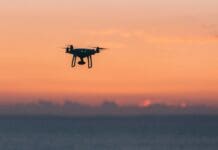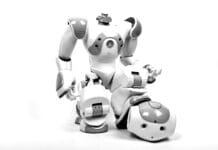This post is also available in:
 עברית (Hebrew)
עברית (Hebrew)
It turns out that the new popularity of AI-based applications and their use is not limited to high-tech solutions, as proven by researchers at the University of Modena and Reggio Emilia in Italy who used drones and AI to help farmers fight pests.
One specific pest, the Halyomorpha halys (also known as the marmorated stink bug) is wreaking havoc on agriculture in North America and southern Europe and has caused damages worth nearly $640 million in Italy in 2019 alone. Current solutions for this pest are labor-intensive and difficult to execute when dealing with large orchards and so the researchers found a method that consumed less time and energy.
According to Interesting Engineering, the researchers developed an automated flight protocol so that drones could capture high-resolution images of pear orchards from a height of eight meters, as drones flying at these heights were less disruptive to pest movements than human observers. The images were then used to train AI models in identifying a pest infection, which was more effective and had an accuracy of 97 percent compared to those trained from scratch.
Another extremely helpful innovation used for these drones (which was developed by various US universities) is an extremely thin and flat imaging sensor that is compact, lightweight, and can switch between detailed infrared imaging and edge detection when required. More importantly, the sensor system can perform these functions on-site instead of needing large amounts of data and energy-intensive processors. This sensor uses innovative flat-optic lenses that are suited to replace traditional lenses in sensing applications using drones and satellites.
The researchers suggest that this tech could help farmers boost their harvests by rapidly identifying the needs of their crops instead of using a more general “blanket approach”. Moreover, saving the crops from irrigation, pest control, and fertilizer usage could also help bring more affordable groceries to the public.

























